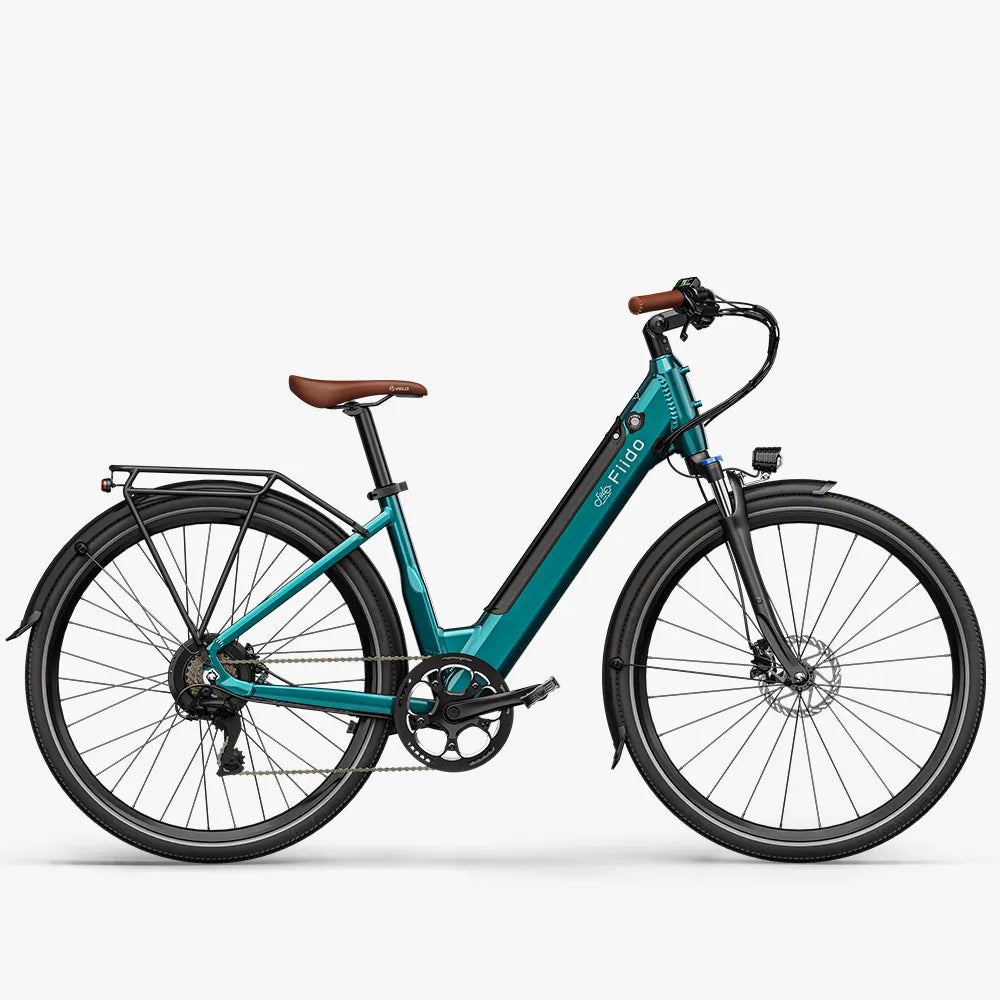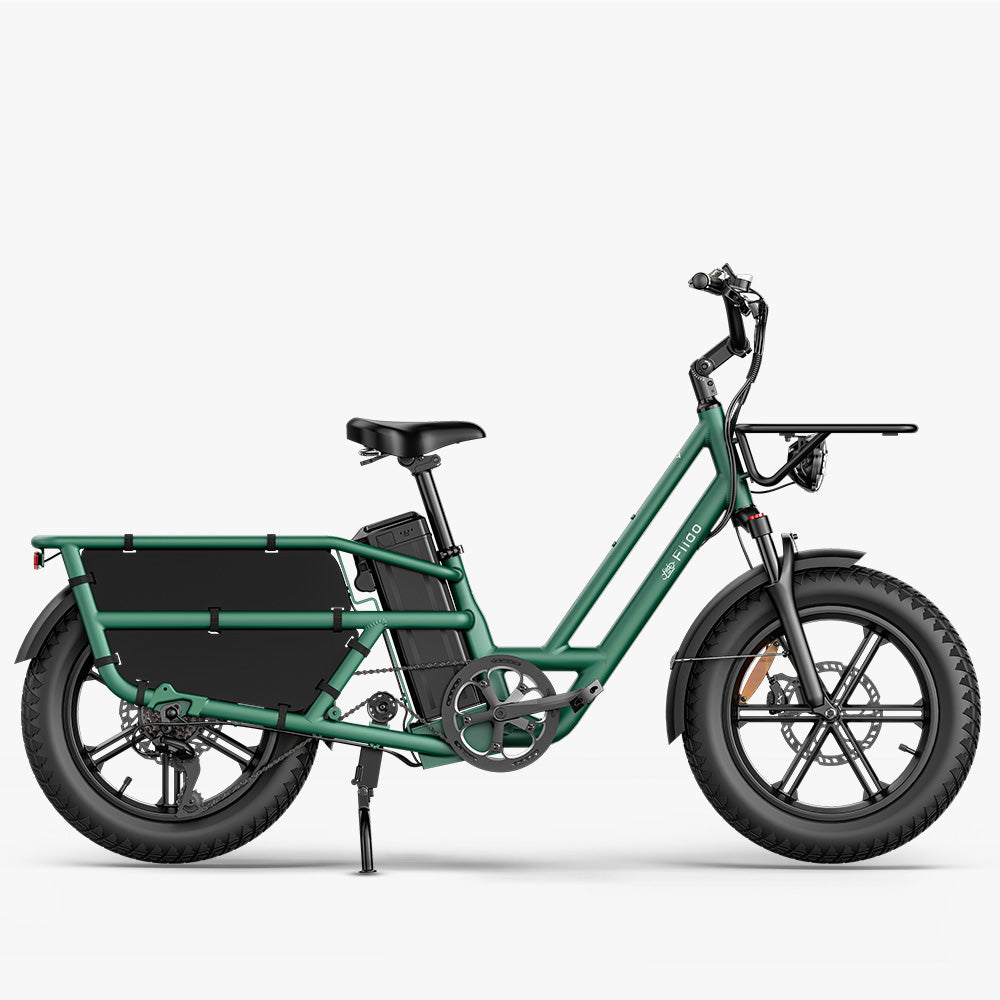Riding an electric bike with your child can be convenient, but issues like loose seats, bumpy roads, and improper installation can pose serious safety risks. Many parents worry that their child might wobble, fall off, or get hurt due to incorrect handling. Safety becomes their biggest concern. If you share these concerns and want practical solutions, this article will provide you with detailed safety tips and installation advice to help you ride with confidence and ensure every trip is safe and comfortable for your child.

Common Child Seat Installation Options for Electric Bikes
Rear-mounted child seat – This type is installed above the rear rack or rear wheel of an electric bike and is currently the most popular and stable option for carrying children. It provides solid support and balance, making it compatible with most e-bike models—ideal for short- to mid-distance rides like school drop-offs or city commuting with your child. Rear seats are generally recommended for children aged 1 to 5 years. The weight capacity depends on your e-bike's rear rack, which typically supports up to 25 kg. However, some longtail e-bikes, like the Fiido T2, can handle up to 80 kg, allowing you to carry two children safely. As long as your child weighs under 22 kg, a rear-mounted seat offers a secure, comfortable ride without obstructing your view or affecting electric bike control—making it a reliable and parent-approved solution.
Front-mounted child seat – Usually attached to the handlebars or top tube, this option gives your child a clear forward view and allows you to easily keep an eye on them while riding. It’s best suited for younger children aged around 9 months to 3 years, especially those who are smaller and lighter. While this setup is great for bonding and short urban trips, it may affect bike stability and steering for heavier children due to the forward weight distribution. As such, it’s recommended for short rides or experienced riders comfortable with handling a more front-heavy load.
Is Your E-Bike Suitable for a Child Seat
| Checklist | Description |
|---|---|
| Is the frame design suitable for mounting? | Rear seats require a solid rear rack or mounting points that can support ≥ 22 kg; front seats need enough space in front of the handlebars without blocking steering or vision. |
| Is the e-bike's load capacity sufficient? | Make sure the motor torque is adequate, the frame is stable, and the tire width is appropriate to ensure safety and stability when riding with a child. |
| Is the braking system responsive and strong? | The brakes should handle the extra weight safely, especially during sudden stops. |
| Are certified accessories or compatibility guides available? | Check whether the brand offers adapters or recommended models—for example, some Fiido models support installing a rear seat and backrest. |
After reviewing the checklist, if you're ready to move forward, the next step is to assess your own e-bike to see whether it's structurally suitable for safely installing a child seat
1. Does your bike's frame support a child seat?
-
Rear-mounted seats require a strong, stable rear rack or frame connection point that can handle the added weight—usually at least 22 kg.
-
Front-mounted seats need sufficient space on the handlebar area or top tube, and must not interfere with your steering or obstruct your view while riding.
2. Is your e-bike's braking and load capacity up to the task?
-
Braking system: Look for bikes with hydraulic disc brakes, and ideally, ones with a motor cut-off feature that disables the motor when braking for enhanced control and safety.
-
Motor torque: For carrying a child, an e-bike should ideally have a motor with at least 50–60 N·m of torque to handle the extra load smoothly.
-
Sturdy base and wide tires: These improve overall balance and stability, especially when carrying passengers.
3. Are there compatible accessories or brand-specific adapters?
-
Some e-bike brands offer official child seat adapters or have recommended compatibility lists.
-
For example, certain Fiido models with rear racks support child seat attachments and backrests.
-
Popular child seat brands like OGK or Urban Iki are commonly used with the Fiido T2, but compatibility depends on rack size and shape—so always check the product details from the seat manufacturer.
Potential Risks and Precautionary Measures
Most child seats come with comprehensive instruction manuals, so we won't repeat the full installation process here. However, there are a few risky practices that are often overlooked and deserve your attention:
1.Front-mounted child seats – Before installation, it's essential to thoroughly test the handlebar’s steering flexibility multiple times to ensure the seat does not interfere with your control. Improper installation may limit handlebar movement, which increases the risk of losing control and falling during riding.
Additionally, always install foot guards and other protective accessories to prevent your child’s hands or feet from sticking out of the seat. This helps avoid injury from getting caught in the wheels or chain. Also, teach your child to sit properly and keep their hands and feet inside the seat at all times to maximize safety.
2.Rear-mounted child seats – Always confirm the maximum load capacity of your bike’s rear rack before installation. Choose child seats and accessories that meet the standards and are of reliable quality. If the rack is not strong enough, the seat may wobble or even fall off, which is extremely dangerous.
Moreover, it's recommended to add protective guardrails to the rear rack for extra safety. This provides additional protection in case your child makes sudden movements while seated, as it may be difficult for parents to react immediately. A guardrail can help reduce potential risks significantly.

What Legal Regulations Must Be Followed
Here's a simple checklist for reference. If you want to quickly find out whether the e-bike you're considering can support a child seat, contacting the customer service team directly is often the best and fastest option.
In Europe, riding an electric bike with children is a very common practice—but only if you comply with EU regulations and the specific laws of your country or city. To ensure child safety, most European countries enforce strict standards. Here are several key legal points you must be aware of:
1.The child seat must comply with EN 14344 standards.
2.The electric bike must meet EU EAPC (Electrically Assisted Pedal Cycle) standards.
2.The electric bike must meet EU EAPC (Electrically Assisted Pedal Cycle) standards.
3.Children must wear helmets: While only some European countries legally require it, it is strongly recommended for safety.
4.Age and weight limits must follow the product manual: Typically suitable for children from 9 months to 5 years old, weighing no more than 22 kg (rear seat) or 15 kg (front seat).
5.Child seats must be equipped with a secure safety harness, foot protectors, and anti-pinch mechanisms.
6.The child seat must be installed in a designated position (such as the rear rack, bike frame, or mid-frame) and must not interfere with safe handling or riding posture.
7.It is prohibited to carry children in areas without structural seat support (e.g., standing on a regular luggage rack or modified platform).
Fiido electric bikes suitable for installing child seats
Fiido electric bikes equipped with rear racks generally support the installation of child seats, but this depends on the specific model. When choosing the appropriate child seat size, refer to the rear rack dimensions of the particular bike model.
The C11 Pro is a lightweight city commuter electric bike suitable for installing a single rear-mounted child seat. Its sturdy aluminum alloy frame, combined with hydraulic disc brakes and a front suspension system, provides a safe and comfortable parent-child riding experience, especially for daily commuting with one adult and one child. However, due to its narrower tires and lighter overall structure, it is not recommended to carry two child seats or heavier children. It is advisable to choose a lightweight child seat for electric bike use and ensure stable installation.
Fiido C11 Pro City E-bike
€1.099,00 €1,799.00
A powerhouse with a 400 km range and 4-piston brakes, ideal for hunting and fishing trips.
Reminder: Prices are subject to the product detail page ,some earlier card details may have been updated.
The T2 is a fat-tire electric bike with excellent load capacity and rear seating space, making it especially suitable for family use. It supports installing one or even two child seats for electric bike setups, along with armrests, safety rails, and other parent-child combinations. Its four-piston hydraulic brakes, wide tires, and long-travel suspension make riding more stable and safe, adaptable to various terrains. This makes it an ideal choice for families with multiple children or heavy-load parent-child trips.
Fiido T2 Longtail Cargo E-bike
€1,399.00 €1,799.00
Multifunctional, family-friendly cargo ebike with endless possibilities.
Reminder: Prices are subject to the product detail page ,some earlier card details may have been updated.
Final tips
Riding an electric bike with child seat is a fun and efficient way to travel, but safety must always come first. Whether you plan to add a child seat, use an electric bike with 2 child seats, or consider double seats or trailers, compliance, safety, and compatibility must be prioritized. If you are looking for an electric bike with child seat options that suit both adult commuting and family trips, consider models like the Fiido T2 long-tail electric bike, which offers a stable structure and supports various expansions.
If you need more space and flexible use, check out our article on the “Fiido electric bike child seat trailer” to learn more.


















